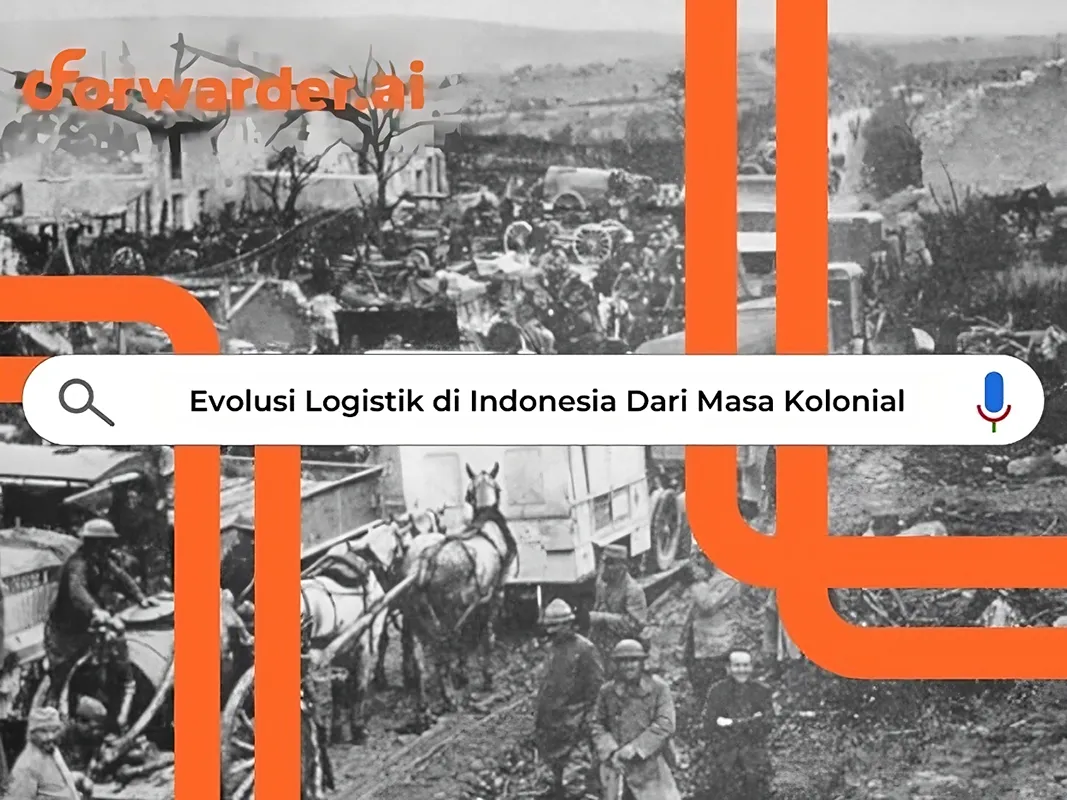
Infrastructure and transportation methods of logistics in Indonesia from the colonial era.
The evolution of logistics in Indonesia shows a long journey from a simple system during the colonial era to a sophisticated and integrated sector today. So, what does the history of logistics in the country look like?
During the colonial period, the logistics system in Indonesia was very simple and relied on traditional methods such as manual labor and transportation by animals. The Dutch colonizers started building infrastructure to support their economic interests, such as the first railway line connecting Semarang with Tanggung in 1867 and large ports like Tanjung Priok in Jakarta for the export of crops to Europe.
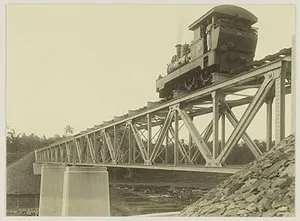
(source: https://temanggungcity.wordpress.com/2009/07/15/temanggung-jalur-kereta-api-yang-telah-hilang/)
The development of this infrastructure facilitated the movement of goods from the interior to the ports, although land transportation was still limited and many roads were in poor condition. Railways became the main means of transportation for bulk goods and long distance distributions, while traditional transportation and water via rivers remained important for local distribution. The infrastructure built by the Dutch was mainly focused on areas that benefited them, creating uneven development.
Although intended for the exploitation of Indonesia's natural resources, the infrastructure foundations built by the Dutch in the colonial period provided the basis for future logistics developments. Better transportation systems improved mobility and opened up access to new markets. This allowed Indonesia to continue the development of more integrated and efficient logistics in the independence era and beyond.
After independence in 1945, Indonesia focused on building and improving logistics infrastructure to support the development of the national economy. In the 1950s and 1960s, the government built highways, ports and airports to improve connectivity between regions. These projects aimed to connect different regions, facilitate the movement of goods and people, and support the distribution of basic necessities and agricultural products.
Over time, Indonesia's logistics industry underwent a significant transformation. The government introduced a national development program that encouraged the modernization of means of transportation, including the upgrading of land, sea, and air vehicle fleets. This modernization increased the capacity to deliver goods and improved the quality of logistics services. National shipping companies and airlines began to grow, providing more efficient and reliable transportation services.
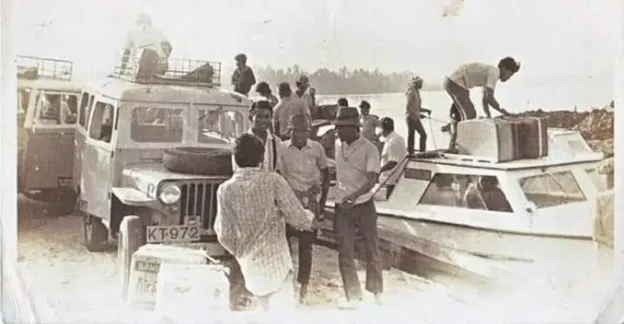
(source: https://www.balpos.com/metropolis/1793472522/aktivitas-pelabuhan-balikpapan)
In the 1970s and 1980s, technology began to play an important role in the evolution of logistics in Indonesia. The use of inventory management systems and modern communications technology helped improve operational efficiency and reduce logistics costs. The development of telecommunications infrastructure also enabled better coordination in the supply chain. With a stronger foundation and increasingly sophisticated technology, Indonesia's logistics sector continues to thrive, supporting economic growth and improved public welfare.
Read more : Digital vs. Traditional Freight Forwarder: The Ultimate Comparison
Indonesia's New Order period (1966-1998) was characterized by ambitious economic development efforts and deep social transformation. The logistics sector played a key role in supporting industrial growth and the distribution of goods. However, challenges such as complex regulations and accessibility to remote areas affected logistics development.
The government's focus on transportation and port infrastructure development is a top priority. This development program aims to improve connectivity between regions in Indonesia, although there are still shortcomings in accessibility to remote areas. Port development, such as at Tanjung Priok and Tanjung Perak, was also undertaken to increase the capacity and efficiency of loading and unloading goods.
The New Order government encouraged investment in the logistics sector, however, complex regulations and bureaucracy were obstacles. Nonetheless, the use of technology was introduced in logistics management to improve operational efficiency. Although still in its early stages, this transformation provided a foundation for further developments in Indonesia's logistics sector.
Since the Reformation Era began in 1998, Indonesia's logistics sector has undergone a major transformation. Economic and regulatory liberalization, transportation infrastructure improvements such as toll road construction and port expansion, as well as bureaucratic reforms for logistics business licensing have been the main focus. These measures helped improve the efficiency and capacity of logistics that was previously dominated by state-owned companies.
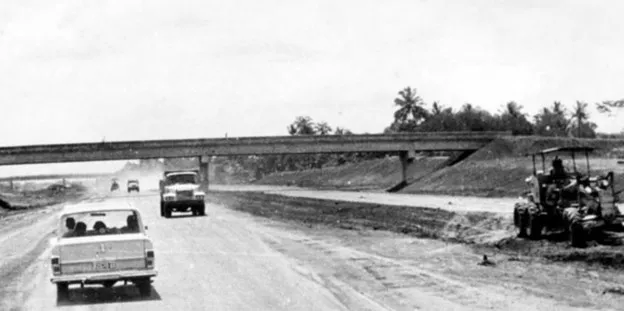
Globalization also plays an important role in the development of logistics in Indonesia. Integration with global supply chains, the implementation of technologies such as warehouse management systems and real-time tracking, as well as the e-commerce boom that increased demand for fast and flexible logistics services, all pushed the sector to adapt and evolve. Information and communication technology is key in modernizing logistics, helping companies improve their operational efficiency.
Despite much progress, Indonesia's logistics sector still faces challenges such as uneven infrastructure outside Java, complex regulations and bureaucracy, and the need for skilled labor. However, with its strategic geographical position and huge opportunities for growth, Indonesia has the potential to become a logistics hub in Southeast Asia. Collaboration between the government and the private sector is essential to overcome these challenges and drive the development of more advanced and efficient logistics.
Entering the 21st century, technology brings significant changes in Indonesia's logistics sector through the application of advanced technologies such as IoT, big data, AI, and automation. IoT enables real-time tracking of goods, while big data and analytics help companies make better decisions. Artificial intelligence is used for operational automation and inventory management, and advanced warehouse management systems improve storage and retrieval efficiency.
The growth of e-commerce in Indonesia has driven innovation in last-mile logistics, with companies using digital platforms to increase flexibility and speed of service. Blockchain technology is being used to increase transparency and security in the supply chain, while integrated digital platforms enable better collaboration between different parties in the supply chain. All these innovations open up new opportunities and improve operational efficiency.
While much progress has been made, Indonesia's logistics sector still faces challenges such as uneven digital infrastructure, regulation and data security, and workforce skills. However, opportunities for growth remain great with the right adoption of technology. Collaboration between the government, private sector, and educational institutions is essential to overcome these challenges and capitalize on the opportunities offered by the digital age and Technology 4.0.
Read more : Revolutionising Freight Forwarding in the Digital Age: A Comparison to Similar Businesses in Indonesia
The COVID-19 pandemic has brought major challenges to the logistics sector in Indonesia, including supply chain disruptions, changes in consumer demand, and operational limitations. Movement restrictions and border closures have caused delivery delays and shortages of goods, while demand for health products and basic necessities has soared. Strict health protocols also reduce the operational efficiency of logistics companies.
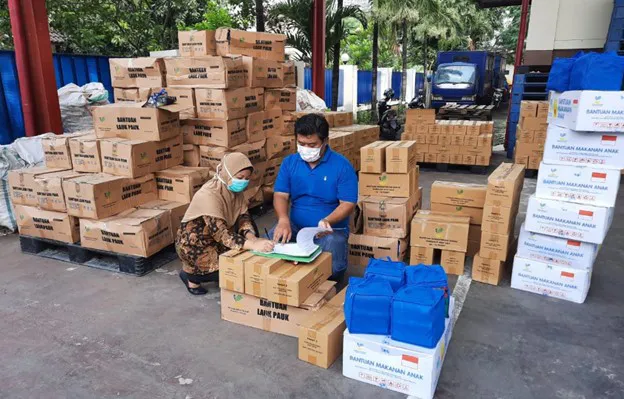
To overcome these challenges, the logistics sector in Indonesia is adapting by accelerating the adoption of digital technologies, such as warehouse management systems and real-time tracking, and improving last-mile delivery services to meet the surge in e-commerce. Collaboration between logistics companies, the government, and healthcare providers has been key in ensuring the smooth distribution of essential goods during the pandemic.
Post-pandemic, the logistics sector is showing signs of recovery and transformation. Supply chain recovery, increased infrastructure investment, adoption of sustainable logistics practices, and improving the quality of human resources are the main focus. With the right strategies in place, Indonesia's logistics sector is poised for a more resilient and efficient future, thanks to the experiences and innovations developed during the pandemic.
Technological advancements and changes in the global economy have driven major transformations in the way goods are shipped and received across the archipelago. Going forward, challenges such as uneven infrastructure and climate change must be overcome for Indonesian logistics to continue to thrive and contribute to the national economy.
Today, forwarder.ai comes into the Indonesian logistics industry to become a vital component of the country's economic growth. Our focus is on improving convenience and speed in logistics infrastructure and encouraging the emergence of multimodal transportation systems, which integrate with Artificial Intelligence (AI) systems to optimize efficiency in the delivery process. In addition, the rise of e-commerce and the growing demand for faster and more reliable delivery services is further driving forwarder.ai's logistics evolution into innovative, technology-driven solutions.
Booking, cek harga, pilih rute, dan tracking barang, semua bisa kamu lakukan lewat
forwarder.ai.
Nggak ada lagi cerita tanya-tanya manual. Hemat waktu, hemat tenaga, dan tetap punya kontrol
penuh atas pengirimanmu.
